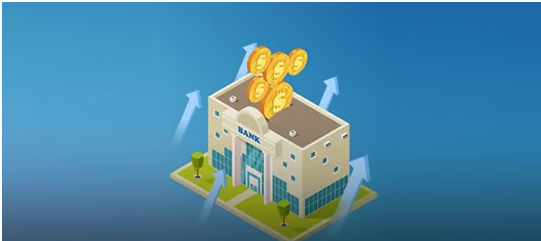In today’s financial world, finding high-yield ways to store money has become a must-do for many. High-yield checking accounts offer a guiding light on this path, offering flexible account management while earning significantly higher interest than traditional checking accounts. They’re a hybrid of a savings account and an everyday checking account, revolutionizing how people think about money management.
What is a High-Yield Checking Account?
A high-yield checking account is a specialized checking account that offers depositors an annual percentage yield (APY) that exceeds that of traditional accounts. Many banks offer this interest rate as an incentive to keep their funds in the account. Unlike traditional savings accounts, which restrict frequent withdrawals, they strike a balance between access to funds and returns.
However, it’s important to note that most high-yield checking accounts have limits on the balance required to earn the high interest rate, as well as certain monthly transaction or deposit requirements to activate the high yield.
Leading High-Yield Checking Account Options
Below are a few examples of high-yield checking accounts currently on the market, with a summary of their advantages and additional conditions:
| Account Name | Maximum APY | Funding Limit | Monthly Fee | Key Terms | Notes |
|---|---|---|---|---|---|
| BCU PowerPlus Checking | Up to 8.00% for the first three months, 4.00% thereafter | $15,000 | None | No minimum balance, no monthly fee, membership required | No fees at over 100,000 ATMs |
| Consumers Credit Union Rewards Checking | Up to 5.00% | $10,000 | None | Requires monthly spending requirements, monthly direct deposits, and credit card spending to meet tier requirements | ATM fee reimbursement, no minimum balance |
| Axos Rewards Checking | Up to 3.30% | $50,000 | None | Requires a monthly deposit of $1,500; meets spending requirements on the card and maintains a certain balance in the investment account | Unlimited ATM fee rebates |
These accounts offer generous returns, but users should carefully read the terms and conditions to ensure they meet the requirements to receive the full interest and benefits.
How High-Yield Checking Accounts Work
High-yield checking accounts may seem simple, but behind them lies a marketing strategy banks use to attract “active customers”:
- Banks typically limit the balance above which higher interest rates apply to control costs.
- Accounts often come with spending, deposit, or transfer requirements to ensure active transactions, generating stable revenue for the bank.
- These requirements protect the bank’s profits while also encouraging customers to maintain cash flow and financial vitality.
In other words, banks use “high interest rates” as a marketing tool to encourage depositors to use their cards more frequently and deposit more, creating a win-win situation for all.
High-Yield Checking Account vs. Savings Account
The biggest difference between the two lies in account flexibility and fund access frequency:
- High-Yield Checking Account offers similar interest returns to savings accounts, but allows users to make payments or transfer funds at any time, making it more convenient.
- Savings Account typically has fewer transaction requirements, making it suitable for long-term savings. They often have no interest balance cap and may offer more stable interest rates.
If you have a larger balance and don’t plan to use it frequently in the short term, a high-yield savings account is still an ideal choice. However, if you want constant access to your money and a higher interest rate, a high-yield checking account is very attractive.
High-yield checking accounts offer a new way to manage your money. They break free from the constraints of traditional checking accounts, offering the returns of savings accounts, injecting new impetus into the flexible use of your assets. By understanding your spending frequency, savings capacity, and account requirements, you can choose an account that’s right for you and achieve your financial goals.
Before choosing, it’s crucial to understand your needs for account flexibility and returns. Such rational judgment step by step will maximize the value of every penny. It will no longer be just a number, but a ladder to financial freedom.
